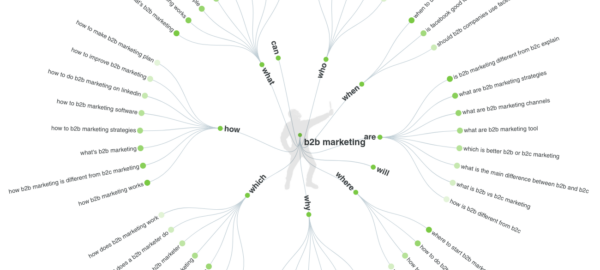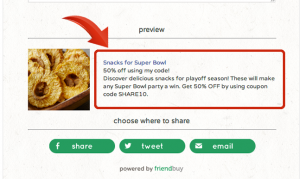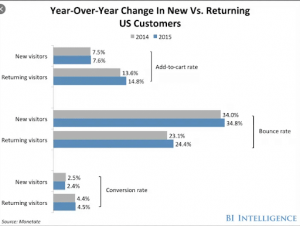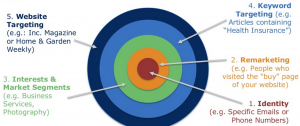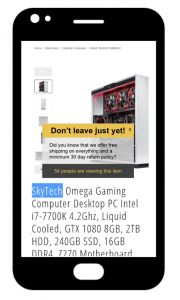How does it feel to have a perfect checklist that works as a gold standard for all your On-Page SEO practices?
Today, I will share with you a complete checklist you can use to ensure that the content on your website is 100% optimized for search.
In fact, if you go through all the processes here, you’ll never need another checklist for your On-Page content. That’s a big promise, and I’m willing to fulfill it.
Now, just a little disclaimer before we begin: Optimizing your content for On-page SEO is not the only factor involved in on-page SEO. There are other factors like crawling and indexing, internal and external links, and structured data which are important but won’t be covered in this post.
Also, although I might talk a little about keyword placement, I won’t cover keyword optimization (which is another important factor in on-page SEO) in full.
With that being said, first, let’s talk a little about On-page SEO.
What is On-Page SEO?
On-page SEO is the process of optimizing the pages on your website for search by search engine users. In simple terms, On-page SEO is everything you do on your website to increase its chances of ranking high on search engines like Google.
On the other hand, off-page SEO is everything you do OUTSIDE your website to increase your chances of ranking high. A huge part of this is getting backlinks for your website.
Why Content is important for On-Page SEO
Content is a major part of your on-page SEO because it is what your readers see when they visit your website.
If your audience loves what they see, they will stay longer, continue to visit and share with their friends. These send signals to Google that you are providing premium content to your audience, and Google will reward you by helping you rank better.
To do On-page SEO the right way, there are a few factors you must get right.
How is Your Page Different from Your Competitors
The game of ranking involves delivering better content than your competitors so that readers choose you over them every time. To achieve this, your content cannot be the same as your competitors.
Think about what you can do to make your content more unique and better than your competition. Can you add photos? Infographics? Case studies? Add them.
Take some time to study websites that are ranking for the same topics you write and figure out what you can do above and beyond what they currently do.
Is Your Copy Well Written and Edited?
Well-written copy is scannable and easy to read.
Almost everyone scans through a webpage before they decide to read through it. If your copy is clamped together with huge blocks of paragraphs, most readers will feel discouraged and leave without reading.
Make your paragraphs short, using nothing more than three sentences per paragraph. Scan through the article yourself to check if it is easily scannable before you post it.
Ensure your copy is well-edited and free from grammatical errors before you post it. You can use tools like Grammarly to go through your articles and consider paying a professional editor to proofread your work.
To show how much the Google algorithm hates unedited content, the Google team lists an example of a low-quality page as one with grammatical and punctuation errors.
Most importantly, well-written copy is written for the user, not for search engines. This means practices like unnecessary keyword stuffing should be avoided.
By writing value-intensive content for your website visitors, you’ll get people to notice and trust you. And they’ll continue to visit when they can trust they’ll get good content from you every time.
Is your copy easy to understand?
There is nothing brilliant about writing complex articles only professors can understand.
Sure, there are a few target markets that would appreciate difficult and advanced words, but most people on the internet aren’t like that. Most people want you to explain complex concepts to them like they’re in the 6th grade.
A good way to check that your copy is easy to understand is by using the Hemingway Editor. This editor shows you the words and sentences in your copy that you should simplify.
Is Your Copy Interesting?
Your copy might be scannable and easy to understand, but if you aren’t making it interesting, you will lose a lot of your readers.
Imagine you want to explain cryptocurrency, for example. This means you have to talk about blockchain technology, fiat currency, etc. These concepts are more boring than having to watch paint dry.
Nobody wants to sit through that.
You can, however, make these complex concepts sound easier by using stories, analogies and personalizing the message.
Tell your readers about the money in their wallet and how that is fiat money controlled by the government. Tell them how cryptocurrencies are not controlled by any government, i.e., decentralized.
Use examples your readers can relate to and you will make your readers more interested in reading till the end of the copy.
When your readers stay longer on your website, it helps tell Google that people enjoy your content, and this will help boost your search rankings. Also, interesting content gets a lot of social shares, meaning you will get a lot of new readers.
Are Your Headings Descriptive Enough?
When writing the title for your copy, apart from using the keywords, you should try to make it as descriptive as possible. This way, readers can know what they’re getting into before they click on it.
But headlines aren’t meant for the title alone. Your subheadings should also be descriptive to allow your readers to flow through the article with ease.
Descriptive subheadings make it easy for your readers to refer to different places in the article and get the required information.
To write a descriptive headline, you can use the following tips:
- Use numbers if you can:
The brain loves structure. Using numbers is an easy way to tell the brain of your readers that the article is well-structured and broken down into chunks.
- Be specific, without revealing everything
A cliffhanger heading is sure to get people diving deep into the article. Your article should tell the reader what they stand to gain by reading without revealing everything in the beginning.
Check out this example: “ Most Website Owners Believe Google only Ranks Fresh Content. Here’s the Truth.”
The headline doesn’t state if the belief is wrong or right, but it causes the reader to challenge their beliefs for a second and anticipate your ideas.
Also, you want to be specific enough to give them a reason to read through your work. Use words like “Tips”, “Tricks”, “Lessons”, “Mistakes”, “Facts”, “Reasons”, “Secrets”, etc.
For example, look at the headline:
“6 copywriting secrets that moved me from $ 0 to $ 1 million in 18 months as a beginner.”
This tells the reader that they are about to get exclusive secrets that worked magic for you. That is a good rationale to get them clicking and reading the content of the article.
- Avoid using big words
Difference and dissimilarity mean the same thing, but “difference” is more commonly used and understood by website readers. If you fill your headlines with words that are difficult to understand, most people won’t bother reading.
Remember that a lot more people will read your headline than the whole article, so you want to make it as enticing as possible so that more people than usual stop to read it.
It’s kinda like a big warning sign post in a zoo or factory. It’s probably the only thing that will catch the attention of your audience.
Use whatever trick you can to make your headline as easy to understand as possible. Make it fun too, so that they don’t forget it.
A lot of people will share an article after reading just the headline, so write it as well as you can, and give them something to share!
Is your copy fresh and up-to-date?
If your website is filled with QDR (Queries that Deserve Freshness) articles, then you want to constantly update it. QDRs are queries that change with time, like “best Mac Laptops” or news articles.
These kinds of articles must be updated regularly to keep up with the latest trends.
There are other kinds of content that are evergreen and don’t need to be regularly updated. In fact, updating those kinds of content will not affect your SEO directly.
However, they can affect your SEO indirectly. When you add the “updated in 20xx” at the top of the copy, visitors see that your copy has been updated recently.
This way, they trust the information more and stay for long. That helps lower your bounce rate and sends a good signal to Google and other search engines.
Do you use keyword variations, synonyms, and LSIs in your copy?
Apart from using the keywords in your copy, you should also try to use other variations that work well with it.
A good tool for finding keyword variations is Answer the Public.
Let’s say your keyword is “b2b marketing”.
Input the keyword into the search bar and the tool will bring tens of related questions and queries. You can use these questions and queries as subheadings to beef up your copy.
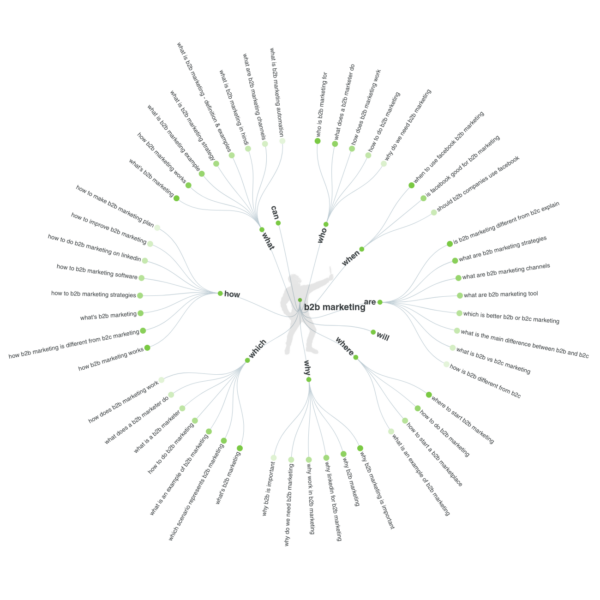
In this example, there are 322 different questions and propositions that could act as variations for your keyword.
You can take some of these word variations, and use them as subheadings in your copy, or input them in different sentences in your copy.
You should also use the synonyms of the keyword phrases or search queries when writing your copy.
This helps give more variety to your copy and your readers are more likely to stick around. Think about it: if you keep using the same words in your copy, your audience will get bored out of their minds and get tired of your copy.
Using synonyms in your copy also helps with search. Sometimes, your audience isn’t going to search Google with the exact words you have in your keyword.
For example, if your keyword is “shoe stores in Ohio”, a part of your audience could be searching for “shoe shops in Ohio”. By using the synonym “shops” in the copy, you increase the chances of matching the exact keyword of your audience.
Finally, it helps to use LSI keywords in your copy that are similar to your keyword.
LSI stands for Latent Semantic Indexing, and they are keywords that help Google deeply understand the copy on any given webpage.
For example, if your keyword is “fitness”, words like “gym”, “exercise”, etc. are related LSI words that help Google deeply understand that the page is about fitness. They are NOT direct synonyms, but they help bring more quality to your copy.
You can find LSI keywords using one of the numerous LSI keyword generators available online, or by using Google Autocomplete.
Is your copy well arranged?
Your copy could contain all the value in the world, but if it is not logically arranged, then you will lose your readers in the beginning.
Your copy should have an introduction, body (which can be broken into sections), and a conclusion. The headings should flow logically from one to another.
For example, in this article, we defined “On-Page SEO” first before moving on to explain why content is important for On-Page SEO. Then we list all the important factors in content for On-Page SEO.
Imagine how dumb it would look if the article started with the factors first, then moved on to explain On-Page SEO.
Ensure your article is structured logically or it won’t make any sense. Also, if your article is long, put an interactive table of content at the top. An interactive table of content is clickable, so when your reader clicks on it, they’ll be taken to the section they want.
Finally, use bullets and numbered lists where necessary to break down points and show numerous examples.
Final Words
The great thing about content optimization for On-Page SEO is that it doesn’t cost much to get done. By making a few tweaks here and there to a well-written article, you can have a well-optimized piece of content for SEO.
However, if you do not have a well-written article, you should hire a professional writer and editor to help with that.
Finally, remember it is more important that you write for your audience and not solely for search engines. Evergreen content is content that the readers find filled with value, and you can’t get it by writing to satisfy Google bots.
Digital & Social Articles on Business 2 Community
(32)
Report Post